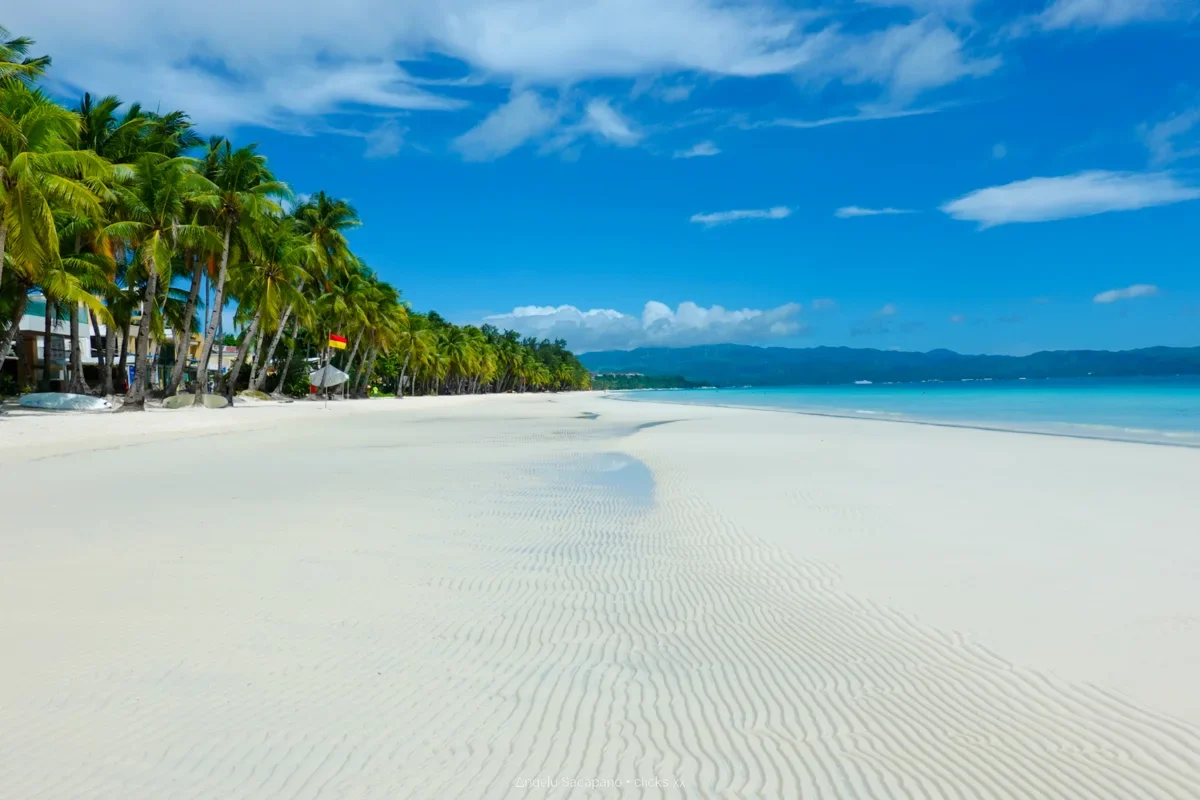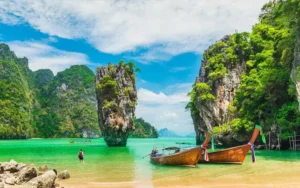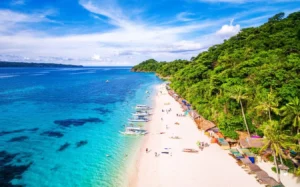Understanding Boracay’s Climate
Boracay, a renowned island in the Philippines, is characterized by its tropical climate, which significantly influences the best time to visit. The climate is predominantly categorized into two main seasons: the dry season and the wet season. The dry season usually runs from November to May, while the wet season spans from June to October. During the dry season, visitors can expect warm sunny days, with average temperatures ranging from 25°C to 32°C (77°F to 90°F). This period is marked by low humidity levels, making it the most favorable time for tourists looking to enjoy outdoor activities and water sports.
Conversely, the wet season brings a different experience to Boracay. From June through October, temperatures remain relatively consistent, averaging around 24°C to 30°C (75°F to 86°F). However, humidity rises significantly during this period, often exceeding 80%. Rainfall is common in the wet season, with the likelihood of experiencing heavy downpours, particularly in July and August. While some may view this as a deterrent, it is essential to note that showers are often brief and followed by periods of sunshine. Thus, visitors may still relish the beauty of the island, albeit with an increased chance of adjusting plans due to sudden weather changes.
Moreover, the difference in weather patterns affects not only the activities one can partake in but also the overall ambiance of the island. The dry season attracts the highest number of tourists, leading to bustling beaches and a vibrant social scene. In contrast, the wet season tends to be quieter, providing a more tranquil escape for those willing to travel during this time. Understanding these climatic shifts can enhance the experience, allowing visitors to choose their travel times based on personal preferences and desired activities.
Peak Season vs. Off-Season: Pros and Cons
Boracay is a renowned travel destination, famous for its stunning white sand beaches and vibrant nightlife. Understanding the peak season and off-season dynamics is crucial for travelers planning their visit. The peak season typically spans from December to May, coinciding with the dry season in the Philippines. During this time, the island experiences an influx of tourists, creating a lively and energetic atmosphere. Popular attractions such as Diniwid Beach and White Beach are bustling with visitors, and numerous events and activities enhance the overall experience. However, higher accommodation rates and crowded public spaces may deter budget-conscious travelers.
In contrast, the off-peak season, occurring from June to November, presents a different perspective of Boracay. During these months, beachgoers may enjoy quieter shores and reduced prices on accommodations and activities. This can be particularly appealing for those seeking a more serene environment to relax and unwind. However, it is essential to note that the off-peak period also coincides with the rainy season, which brings the risk of tropical storms and typhoons. Weather patterns can be unpredictable, affecting travel plans and outdoor activities.
Another aspect to consider is the local culture, which tends to flourish in peak season due to the increased number of visitors. Markets, restaurants, and bars are bustling with life, showcasing the best of Filipino hospitality. Conversely, off-peak season allows for a more intimate experience with locals, as they engage in everyday life without the overwhelming flow of tourism.
Ultimately, weighing the pros and cons of visiting Boracay during peak or off-peak seasons depends on individual preferences. Travelers should consider whether they prioritize a vibrant atmosphere or a more tranquil getaway, as well as the potential impact of weather conditions on their overall travel experience.
Key Events and Festivals to Consider
Boracay, one of the Philippines’ most popular tourist destinations, is not only known for its stunning beaches but also for its vibrant cultural events and festivals throughout the year. When planning a visit to Boracay, it is essential to consider these key celebrations, as they can significantly enhance your travel experience. Among these, the Ati-Atihan Festival, typically held in January, stands out as a major highlight. This lively festival is characterized by its colorful parades, energetic street dancing, and the traditional practice of painting one’s face in black soot, reflecting the rich cultural heritage of the Aeta people of the region. Participating in this festival offers visitors a unique opportunity to immerse themselves in local traditions and engage with the community.
Another noteworthy event is the Boracay Dragon Boat Festival, which usually occurs in August. This sporting event attracts teams from various countries and encourages camaraderie among participants and spectators alike. The festival includes thrilling dragon boat races across the turquoise waters, showcasing athleticism and teamwork. Attending this festival not only provides entertainment but also fosters a sense of belonging within the vibrant Boracay community, allowing visitors to connect with both locals and fellow tourists.
It is important to note that these festivals draw significant crowds, meaning that accommodations can fill up quickly during these times. Therefore, travelers are advised to book their stays well in advance to secure a suitable lodging option. Moreover, experiencing these local celebrations allows visitors to appreciate the island’s culture and traditions. Engaging in the festivities not only enriches one’s visit but also creates lasting memories of the beautiful island of Boracay.
Personal Recommendations Based on Activities
When planning a trip to Boracay, your choice of the best time to visit may largely depend on the activities you aim to indulge in during your stay. For beach lovers, the dry season, which typically runs from November to May, is the most favorable period. During these months, visitors can expect sunny days and calm waters, perfect for sunbathing and swimming. The peak months of December and April offer particularly vibrant beach atmospheres, with various beach parties and events taking place, enhancing the overall seaside experience.
If adventure is high on your agenda, consider visiting during the shoulder months of May to June or September to October. These times generally present fewer crowds, allowing for a more intimate connection with the island’s natural offerings. Water sports including kite surfing, parasailing, and scuba diving can be enjoyed with less wait time for equipment rentals and fewer participants in the waters, enhancing both safety and enjoyment. The wind conditions during these months are also favorable for various water sports, making it an ideal choice for thrill-seekers.
For those interested in Boracay’s vibrant nightlife, the peak season from mid-December to April is your best bet. This timeframe showcases a variety of nighttime events at local bars and restaurants, providing ample opportunity to experience Boracay’s famous nightlife scene. Alternatively, the low season from June to October offers a more laid-back atmosphere, ideal for travelers seeking quieter evenings to unwind after a day of exploration.
Finally, sightseers may find visiting just before or after the peak season rewarding, as the weather is still pleasant, and the popular attractions such as the famous White Beach and Puka Beach are less crowded. This allows for a more enjoyable experience while exploring the stunning landscapes Boracay has to offer.







